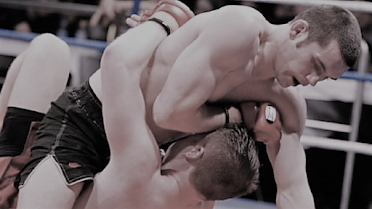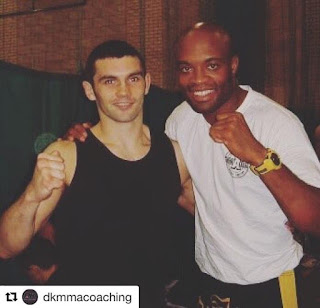How to make the most of your MMA Training
One of the most important things for an aspiring fighter is to have a goal and a plan for what you want to accomplish. This is something which is often neglected by Fighters.
Many have no idea of what they are trying to do or what their goals are and therefore have no way of telling if they are being successful or just going through the motions.
This is the opposite of most other high-performance sports. Olympic athletes have a clear goal of winning gold in the Olympic games in a certain year and their entire life and career is based around that goal.
They compete in smaller events in the preceding years in order to peak on a specific time date. They also know that they will almost never get a second chance once that window of opportunity has passed by.
In contrast, most MMA fighters have no clear goals. They have vague dreams of getting to the UFC or other big events but no clear plan or timeline of how it's going to happen.
Having a timeline is very important because it focuses your energy and attention. An Olympian knows that if they are not ready and at the peak of their competitive career at a certain date and time (the Olympic year) they don't make the Olympic team and then they won't get a second chance.
MMA is different because fight shows are happening all the time rather than every four years. However, this may give the fighter a false sense of security that they have more time than they actually do.
The structure of MMA is obviously different from Olympic sports but there are still similarities in the competitive career of both types of athlete.
In the same way that you will only get one chance to be an Olympian, you will also usually only get one chance to be a fighter.
The competitive career of nearly every successful fighter usually follows this trajectory:
compete and win in amateur MMA
compete and win as a professional in MMA
amass a winning record against legitimate opponents
win regional and national titles in smaller promotions
get signed by the UFC or one of the other major international promotions
amass a winning record until you get into the top ten rankings and then eventually fight for a title.
It is important to realise that you don't get to go back and redo any of the steps if you have skipped them or things didn't work out.
If your skill level isn't good enough by the time you make it to the UFC you will lose your fights and you won't get back.
It is very unusual for fighters to get dropped or cut by the major organizations and then brought back for a second chance and usually if they do it is understood that they are there to build up the names of up and coming fighters.
MMA fighters are on just as much of a strict unforgiving timeline as their Olympic counterparts. You have a date with destiny approximately ten years after you first step into the ring or cage for your first amateur fight and if you aren't fully prepared by then you won't get a second chance.
How do we make sure that you are prepared?
By tracking your progress and keeping track of the key performance indicators - How many fights have you won since your first amateur fight? Have you beaten many highly ranked opponents or won regional or national titles?
If you are already six or seven years into your fight career and haven't done any of this then it is unlikely you will be on track to achieve the goal of fighting for a title in a major promotion.
The problem is that especially in the social media age many fighters are too focused on the wrong metrics. For example, how many ‘likes’ their social media posts are getting or how many free t-shirts they are being sent by sponsors.
These things make the aspiring fighter feel good and may serve some small purpose in terms of motivation but are ultimately not going to bring them closer to achieving their goals and in my experience can often be detrimental to their progress.
Focusing on the wrong numbers such as Instagram Likes distracts you from what's really important - winning Fights & winning titles.
It also distracts the fighter from the smaller micro-goals that they need to be focused on in order to achieve the bigger goals.
The smaller targets of how many hours of training did I do this week, how many times did I use the technique or combination that I’ve been working on during this round of sparring, how many times did I successfully execute the escape technique that I’ve been working on.
Know your goals, understand what you need to do to reach your goals, focus on doing what you know you need to do and everything else will fall into place.









